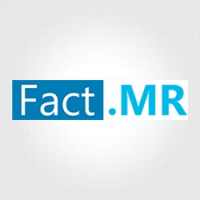Brain Tissue Oxygen Monitoring Systems Market Could Grow at Healthy CAGR During 2018-2028
Fact.MR has announced the addition of the “Brain Tissue Oxygen Monitoring Systems Market Forecast, Trend Analysis & Competition Tracking - Global Market Insights 2018 to 2028"report to their offering.

Rockville, MD -- (SBWire) -- 12/21/2018 --The brain tissue oxygen monitoring systems are generally used to help patients-hit by traumatic brain injury and cerebral vascular issues like strokes etc. The Fact.MR projects that the brain tissue oxygen monitoring systems market will witness a healthy CAGR by the end of the forecast period.
The report determines the factors that could drive the demand of brain tissue oxygen monitoring systems during 2018-2028. It has segmented the market by distribution channel, region, and mechanism.
Mounting Cases of Brain Diseases and Disorders Could Drive Sales of Brain Tissue Oxygen Monitoring Systems
The sales of brain tissue oxygen monitoring systems are likely to grow, owing to the growing cases of brain diseases and disorders, including TBI, abbreviation for traumatic brain injury; and strokes, etc.
The Centers for Disease Control and Prevention stats show that the U.S. registered more than 2.5 million hospitalizations and deaths caused by TBI, amounting to 50,000 deaths, in 2016. The data depicted a shocking rise in TBI-related hospitalizations, as it climbed 47% in six years between from 2010 to 2016.
Get Experts' Insights For FREE: https://www.factmr.com/connectus/sample?flag=S&rep_id=2292
Report Determines Clinical Driver of Brain Tissue Oxygen Monitoring Systems Market
For the prognosis and treatment of TBI patients, the measurement of their brain's oxygen partial pressure is pivotal. Currently there is no absolute medicinal treatment for brain trauma, which is projected to clinically drive the demand of the brain tissue oxygen monitoring systems market.
In the case of traumatic brain injury, brain oxygen is a main parameter of mortality as slight span of hypoxia and hypotension could increase mortality significantly. To avoid any sort of risks in this scenario, medical practitioners are increasingly inclining towards brain tissue oxygen monitoring systems.
Inefficient traditional methods of measuring brain tissue oxygen could drive sales of brain tissue oxygen monitoring systems
The traditional methods of measuring brain tissue oxygen lack in a number of ways, which could trigger the growth of brain tissue oxygen monitoring systems market. For example, positron emission tomography and Computed Tomography (CT), can only measure continuous brain oxygenation. Whereas, the peripheral ways of measuring brain tissue oxygen, like intracranial pressure and cerebral perfusion pressure are sensitive to peripheral tissue oxygen extraction, thus aren't reliable.
Climbing TBI Risk factors Could Drive Brain Tissue Oxygen Monitoring Systems Market
The rise in the number of TBI-causing factors is representing a lucrative market opportunity for the sales of brain tissue oxygen monitoring systems. The mounting risk factors, including growing popularity of sports; cumulative youngsters, rising geriatric population; prevalence of safety loopholes; and mounting vehicles are estimated to trigger hefty revenues for players operating in the brain tissue oxygen monitoring systems.
As per CDC, TBI is mainly caused due to falls, and they are responsible for more than 46% of all hospitalizations and deaths caused by TBI in the U.S. The stats show that the rates of recreation-related TBI have grown significantly in children of 19-years and below age group. Whereas, falls were responsible for nearly 79% TBI-caused hospitalizations and causalities in elderly people aged 65 years and above. Accounting for a 14% share, motor vehicle crashes were the third major cause of all TBI-related hospitalizations and deaths in people of all ages.
Fast-Developing Technology Positively Influencing Brain Tissue Oxygen Monitoring Systems Market
The fast changing, progressing, and innovating technology like the onset of advanced algorithms, impressive data storage competences, interactive touch-screen interfaces for instant access, enhanced battery life, etc. are some of the factors that could also increase the demand for the brain tissue oxygen monitoring systems, which will further drive the growth of the respective market.
Get Access to Report at https://www.factmr.com/checkout/2292/S
Other Insights
The installation cost of brain tissue monitoring systems is very high, and their maintenance isn't pocket-friendly, which could hamper their demand.
Most of the developing regions of the world witness lower penetration of brain trauma centers & multispecialty hospitals, which could limit growth of brain tissue oxygen monitoring systems.
A large section of society isn't aware of TBI, and thereby the ways to deal with the condition. This lack of awareness could hinder the growth of brain tissue oxygen monitoring systems market.
Aforementioned estimations and insights are mentioned in Fact.MR's report on brain tissue oxygen monitoring systems market for the period 2018-2028.
For more information on this report, please visit:
https://www.factmr.com/report/2292/brain-tissue-oxygen-monitoring-systems-market
About Us
Fact.MR is a fast-growing market research firm that offers the most comprehensive suite of syndicated and customized market research reports. We believe transformative intelligence can educate and inspire businesses to make smarter decisions. We know the limitations of the one-size-fits-all approach; that's why we publish multi-industry global, regional, and country-specific research reports.
Contact Us
FactMR
11140 Rockville Pike
Suite 400
Rockville, MD 20852
United States
Email: sales@factmr.com
Media Relations Contact
Sudip Shaha
Head of Marketing
Fact.MR
353-1-6111-593
https://www.factmr.com
View this press release online at: http://rwire.com/1109138